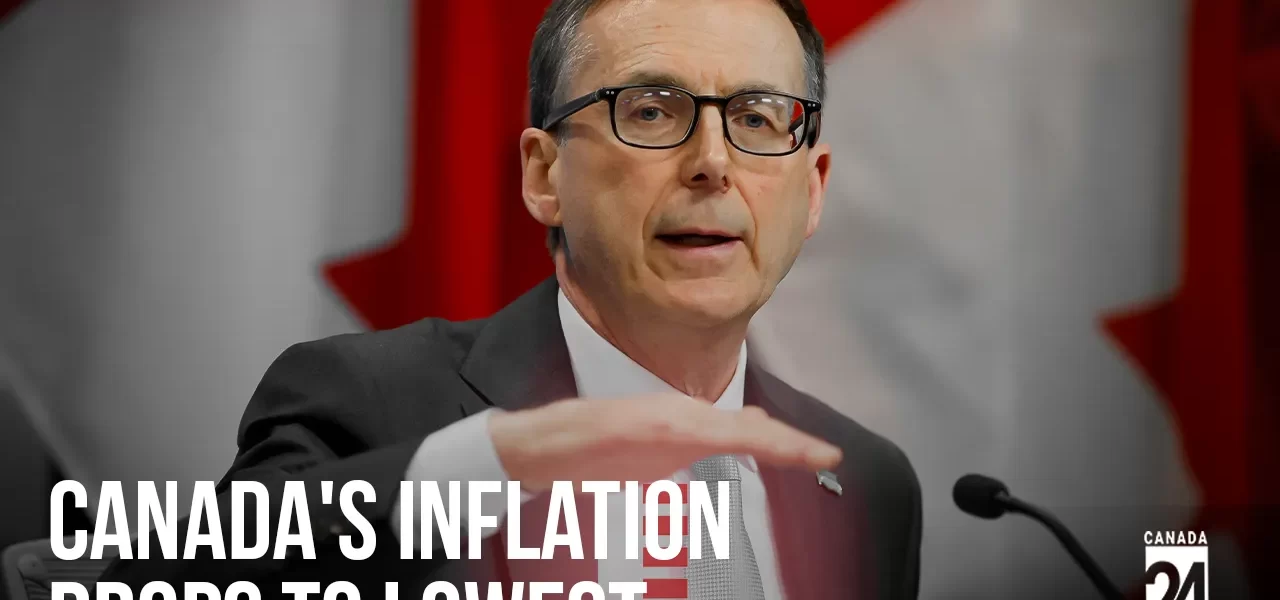Canada’s Inflation Drops to Lowest in Three Years, Fueling Speculation of June Rate Cut
Canada’s annual inflation rate fell to 2.7% in April, the lowest in three years, as shown by data released on Tuesday. This decline has increased the likelihood of an interest rate cut by the Bank of Canada in June.
In March, inflation was at 2.9%, and analysts had predicted it would drop to 2.7% in April. Every month, the consumer price index (CPI) rose by 0.5% in April, slightly less than the expected 0.6% increase. Furthermore, these inflation figures are crucial for the Bank of Canada. Governor Tiff Macklem, who has emphasized the need for clear signs that prices are decreasing before deciding to reduce interest rates.
Royce Mendes, head of macro strategy at Desjardins Group, stated that the data should convince central bankers to start easing monetary policy. He expects the first rate cut to occur in June. After the data’s release, money markets increased their bets on a June 5 rate cut to nearly 55%, up from 39% earlier.
After the inflation data was released, the Canadian dollar weakened by 0.29% to 1.3663 against the U.S. dollar, or 73.22 U.S. cents, as of 12:42 GMT. Yields on the government’s two-year bonds fell by 7.3 basis points to 4.269%.
Kyle Chapman, an FX Markets Analyst at Ballinger Group, commented that the Bank of Canada now has no reason to delay cutting rates at the June meeting. Since March 2022, the Bank has raised interest rates by 475 basis points, reaching a 23-year high of 5% last July and maintaining that level since then.
This policy has helped slow down price increases from a peak of 8.1% two years ago, but achieving the Bank’s 2% inflation target remains challenging due to high shelter costs, wage pressures, and food prices. Shelter costs, including mortgage and rent, rose by 6.4%, slightly less than the previous month.
According to Statistics Canada, food prices, services, and durable goods saw slower price increases, contributing to the overall decline in inflation. However, gasoline prices have moderated this cooling effect; without gasoline, annual inflation dropped to 2.5% from 2.8% in March.
Core inflation measures also fell, with the CPI-median slowing to 2.6% from 2.9% in March and the CPI-trim falling to 2.9% from 3.2%. These core measures indicate that underlying price pressures are likely to continue to fall.
This report is the final major data release before the Bank of Canada’s next rate announcement on June 5, except for GDP numbers on May 31. Rising gasoline prices in April pushed inflation higher due to factors such as the switch to summer blends, higher oil prices, and an increased federal carbon levy.





